Physical Address
College House, 2nd Floor, 17 King Edwards Road, London, HA4 7AE
Physical Address
College House, 2nd Floor, 17 King Edwards Road, London, HA4 7AE
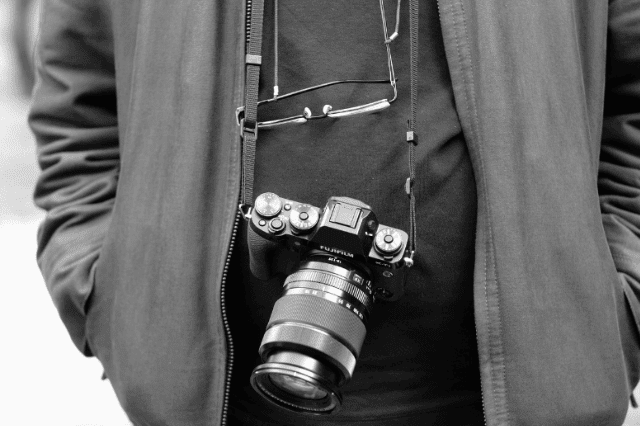
Finding the best Fujifilm cameras for travel doesn’t have to be overwhelming, even with so many excellent options available. Fujifilm has built a stellar reputation among travel photographers for its exceptional image quality, compact designs, and that distinctive film-like aesthetic that makes vacation photos pop. Whether you’re backpacking through Southeast Asia or capturing cityscapes in Europe, these cameras deliver professional results without the bulk of traditional DSLRs.
TL;DR: Fujifilm makes some of the most travel-friendly cameras on the market, combining compact size with exceptional image quality. The X100V excels in street photography, the X-S10 offers excellent value for beginners, and the X-T4 provides professional features in a compact and portable package.

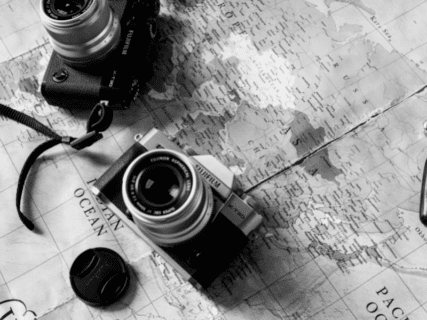
What sets the best Fujifilm cameras for travel apart is their perfect balance of portability and performance. From the pocket-friendly X100 series with its legendary fixed lens to the versatile X-T models that handle everything from street photography to landscape shots, Fujifilm offers something for every type of traveler. Their intuitive controls, impressive low-light capabilities, and robust build quality mean you’ll spend less time fiddling with settings and more time capturing those once-in-a-lifetime moments.
The Fujifilm X-S10 shares many excellent features with the X-T4, but it is more affordable and has a more compact body.
This model is one of my favorite mid-range mirrorless cameras, and it’s an excellent choice for beginners, offering a lot of shooting power in a compact design.
It feels like a DSLR camera due to its comfortable, chunky grip and easy-to-use dials. Fortunately, this retro-styled model doesn’t have the bulk of a DSLR.
Featuring the established APS-C sensor and X-Processor 4 combination, the X-S10 is a versatile and functional all-rounder that is just as comfortable taking stills as it is capturing high-quality 4K video at 30fps.
Autofocus speed and accuracy are among the must-have features for travel photography, and the X-S10 is quite impressive in this regard. It also has an eye-detect feature that allows you to track moving subjects, which is very useful.
It’s also very effective at shooting in low-light conditions. This is thanks to the built-in image stabilization (IBIS), which is very handy when shooting with longer lenses.
The X-S10 is fully customizable, allowing you to set up the buttons and dials to your liking. You can connect the camera to your phone via the Fujifilm Camera Control app, allowing your shots to be sent directly to your phone and then uploaded to Instagram in just a few seconds.
The X-S10 boasts numerous features, including USB charging, a pop-up flash, and a flip-out screen, making it a popular choice among vloggers.
The only downside is that it is not weatherproof. If that is a make-or-break factor in choosing a travel camera, you should opt for the Fujifilm XP140 (reviewed later in this article).
Additionally, the X-S10 is an excellent camera to start your photographic journey and is also my top pick for vloggers.
The Fujifilm X100V is a worthy contender for the best Fujifilm camera for travel.
Fujifilm’s 23mm (35mm equivalent) lens is legendary and improved in the new X100V. It enables bright and colorful shots with an excellent depth of field.
One of the X100V’s big pluses is the hybrid viewfinder. You can overlay digital information by peering through the eyepiece or switching to full EVF (which displays a high-resolution LCD image). This feature helps zoom in on subjects while checking focus and seeing what your shots look like in real-time.
Other benefits of the X100V include its autofocus and low-light ability, but my only gripe is the lack of image stabilization.
It’s a subtle little camera, making it popular with many street photographers. Its easy-to-use practicality is one of the main reasons for its growing popularity. It also provides a selection of mechanical or electronic shutters, which is handy when shooting quietly is necessary.
The Fujifilm X100V is one of the top travel cameras on the market, boasting a 4.6-star rating on Amazon (as of the time of writing).
The Fujifilm X-T4 is designed for professional photographers who shoot a wide range of subjects on the go. The body of the X-T4 is solid and well-designed, and the top dials have a very familiar and intuitive feel.
Its success is mainly due to its best image stabilization in the Fujifilm range, with a 6.5-stop advantage. When used with a long telephoto lens, it’s one of the best travel cameras for capturing shots in low-light conditions.
About 600 shots are possible with the new battery, which significantly improves over previous models in the X-Series range. For you techies, the X-T4 now uses the NP-W235 Battery.
A welcome new addition is a switch just below the shutter speed dial. This allows you to change between taking still images and video. I love that your settings are stored, making the transition between the two modes much smoother.
Regarding the video functionality, the Fujifilm X-T4 doesn’t disappoint with 4K at 60fps. The image stabilization works like a charm, keeping handheld shots as steady as a rock. Customers are also raving about the new flip-around LCD, which appeals to all those vloggers.
My final thoughts on the Fujifilm X-T4 are that it’s an excellent camera for professional shots, yet not so technical that it’s unsuitable for beginners. With pro-level functions for video and stills, it’s a versatile camera that can’t be faulted.
The Fujifilm Instax Mini 11 is an entry-level instant camera from Fujifilm. The camera utilizes the Instax Mini film format.
A few improvements since its predecessor hit the market include a cool ‘Selfie Mode’ and much better auto-exposure.
The camera is easy to use and takes adorable images in all lighting conditions.
The Instax Mini 11 is a straightforward and excellent camera for children to get involved with.
The operation couldn’t be any easier. Press the button to extend the lens, turn the camera on, and then press the shutter button. There are no other buttons to complicate matters, and when you’re finished, push the lens back in and turn the camera off.
To complement the selfie mode, the camera features a small selfie mirror on the front of the lens, a nice touch. To activate this mode, you have to pull the front of the lens outwards and see the words’ Selfie on’ appear.
The Instamax is held vertically by default, making it great for portraits. The viewfinder is a bit small, but that’s typical for this type of Instax Mini format camera.
The focus is ok (not great), but the exposure is excellent. Image quality, overall, is quite good and significantly better than that of its competitors, with the camera’s flash doing a fantastic job of balancing ambient light.
Like most Instax Mini cameras, it works best in good to moderate light when the subjects are close. The flash range is approx. 2.7 m / 8.85 ft).
To sum up, the Instax Mini 11 is the easiest of all the instant film format cameras and will keep the kids happy while the grown-ups use one of its higher-end siblings.
The X100 series has been a favorite among serious photographers for some time, now, with the X100F marking the fourth generation of the series.
Featuring a 24.3 MP sensor, a fast image processor, an improved AF system, and a new button layout with joystick autofocus, the Fujifilm X100F has been praised by many as the best camera in the world.
It took Fuji over two years to release this very advanced camera, with many X100-series owners eagerly awaiting the chance to upgrade to this worthy successor.
The camera’s top and bottom are made from magnesium alloy, so you can imagine how solid it feels and how well it withstands daily use. The middle section is made from plastic and synthetic leather to save on weight.
Adding a joystick for quicker autofocus point selection is the most significant change from the previous model. The joystick enables users to quickly move a focus point toward the subject.
There’s no denying that the X100F looks very cool, with its stylish retro design, and has sold in the thousands due to its unique character. Additionally, the X100F handles like a dream, with just the right weight, size, and balance.
It features a tiny 23mm pancake-type lens that is both light enough to maintain its balance and small enough to fit into your pocket when you’re on the move. It’s perfectly acceptable to wear around the neck, making it popular among street photographers and travelers.
One of the highlights of the X100F is the hybrid optical/electronic viewfinder. It also features a built-in flash that can be activated using the rear rotary dial.
Operating the camera and navigating the menu is a pleasure, with all essential functions and customization options readily available. There are also extra features to explore, including an intervalometer and digital teleconverter.
The beating heart of the X100F is an updated 24.3 MP X-Trans CMOS III sensor. This is the same one that Fuji uses on their X-Pro2 and X-T2 cameras. The increased resolution, from 16.3 MP to 24.3 MP, is very noticeable when examining the details in your images.
Lovers of fast cameras won’t be disappointed with eight frames per second in continuous shooting mode. The X100F was given a boost of 2 fps over the X100T, which, as pros will tell you, can make a world of difference for action photography.
The X100F can manage approximately. Three hundred ninety shots before the battery starts to fade. This is thanks to a faster processor and larger battery than the X100T (which could only manage around 300 photos). Please note that these numbers are based on a combination of different modes and the use of flash. In reality, you’ll get much more than 390 shots on a single charge.
To conclude, the minimalist X100F looks gorgeous, has excellent image quality, and is the perfect camera for travel and landscape photographers.
The Fujifilm FinePix XP140 is the toughest model in the Fujifilm range, waterproof to a depth of 25 meters, making it the most weather-resistant Fujifilm camera ever produced.
Believe it or not, it can operate in temperatures as low as -10 °C and even be dropped from a height of 1.8m without sustaining damage.
The funky XP140 was introduced in 2019 as Fujifilm’s annual update to its XP waterproof cameras, superseding the still-impressive XP130. Like the previous model, Fuji has retained the 5x zoom and 16-megapixel sensor, and the body also looks very similar.
Waterproofing is slightly improved over its predecessor by adding 5 meters to the maximum depth range, but the new 4K video functionality is the main improvement. Other additions include the square video mode, an enhanced maximum ISO sensitivity of 12800, a new auto-timer feature, and additional filters.
The FinePix XP140 is equipped with Wi-Fi and Bluetooth, but what’s new is that you can transfer photos to your smartphone while taking more shots.
There’s a lot to like about the Fujifilm XP140, from its cute design and good range of features, to its most prominent feature: the very reasonable price. Of course, you won’t get control of the X100F, but it does produce nice shots under the right conditions.
You’ll probably get better photos with your phone, but can your phone still work 25 meters underwater and survive being dropped repeatedly onto rocks at the beach?
With that in mind, if you don’t need the 4K video and scene recognition, the XP130 is an even bigger bargain. And if you want something a little more advanced, consider the Olympus TG-6, which is waterproof to 15 meters, features manual control, supports macro shots, and produces stunning 4K footage.
The FinePix SL1000 is a fantastic bridge camera featuring a 16-megapixel resolution, a 3-inch tilting screen, a 920K-dot EVF, RAW format support, Full HD video, and an impressive 50x optical zoom.
Other cool functions to excite budding photographers include a 3-level zoom switch, 1cm Super Macro mode, and a customizable Function button.
The SL1000 primarily aims at more advanced users, but that doesn’t mean novices can’t get involved. The modes more aimed at amateur photographers include manual controls, RAW recording, and an external flash hot shoe.
The manual controls for the camera are found on the command dial. They include the following:
Start-up time is high on the list for travel photographers, allowing them to capture the best shots. The SL1000 is no slouch in this department, with a start-up time of just 1.6 seconds. This process includes switching on the camera, focusing the image, and taking the shot—quite impressive, considering it typically takes around 2.5 seconds for most digital compact cameras.
Fans of continuous shooting will appreciate the three modes offered by the SL1000. They are classed as Low, Medium, and High. The idea here is to take a certain number of pictures in a similar time frame (fps or frames per second). The number of frames available is:
One of my favorite features of the SL1000 is found in the Playback menu. If you choose the first option, “Photobook Assist,” you can create a list of images to include in a “photobook.”
You can make six books to keep your shots neatly organized while on the go.
After creating your photobooks, you can search for particular images using parameters such as the face, date, favorites, and upload mark. The last option allows you to allocate pictures that can be uploaded to your social media accounts, such as Facebook (for images) and YouTube (for videos).
“What’s in the box?” I hear you ask:
In conclusion, the Fujifilm FinePix SL1000 is not the cheapest camera on the market, but it’s worth the money. And if you are on the hunt for an excellent Fujifilm zoom camera, you’ve found it.

Travel photography demands a camera lens that can handle a variety of scenes, from sprawling…
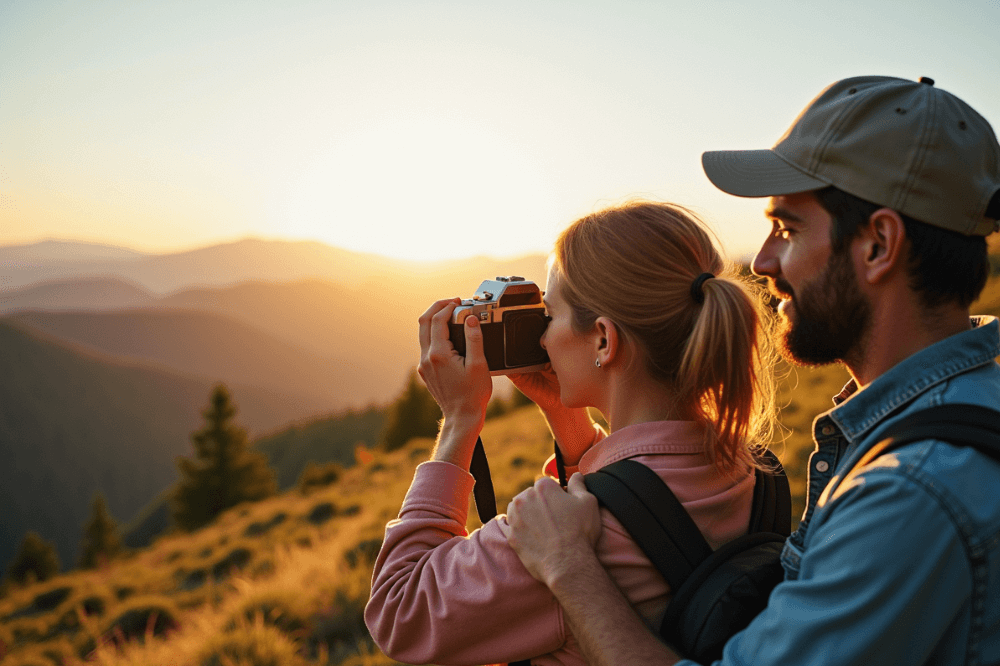
Finding the best 35mm film cameras for travel can transform your adventures from ordinary snapshots…

The best warmest hoodies for winter aren’t just about thickness anymore. Modern designs focus on…

Finding the best underwear that separates your balls has become a game-changer for men seeking…

Finding the best Fujifilm cameras for travel doesn’t have to be overwhelming, even with so…
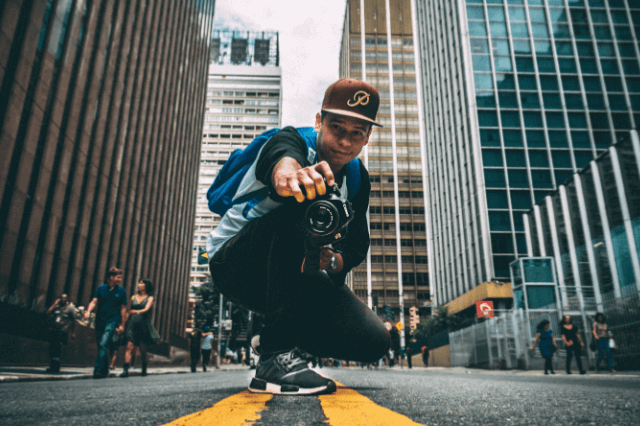
Finding the best zoom cameras for travel can transform your photography adventures from ordinary snapshots…
First of all, you should read this article (lol). But seriously, consider whether you need a separate travel camera or the one on your smartphone that can do the job.
Smartphones have limitations. You may decide that you want to get more creative with your photography, and you might also become annoyed with the blurry backgrounds so that you might invest in a high-quality travel camera instead. Then it would be best to decide between a compact camera or an ILC (interchangeable lens camera).
Decent cameras these days don’t have to cost a fortune. There are a plethora of amazing models available for under $500, and if you opt for a Fujifilm, you can expect many years of use out of it.
I have made a shortlist of considerations when looking for your first travel camera:
The ideal travel camera for me can easily slide into my backpack, is light enough to wear around my neck, doesn’t look too expensive (as I don’t want to get robbed), takes excellent shots quickly every time, and doesn’t break if it gets bumped occasionally.
The latest Fujifilm cameras are among the best-looking, well-designed, and user-friendly cameras available today.
From the affordable and cheerful SL1000 to the mighty X-S10, you can be confident that a Fujifilm camera will deliver a fantastic shooting experience that will enhance your travel experiences.
Fujifilm X cameras are renowned for producing stunning images straight out of the camera. While all of this range shoots in RAW format, you can also shoot JPEGs, which look more punchy with vivid colors.
Fujifilm offers a vast range of cameras, so whether you’re a beginner, enthusiast, or expert, you’ll find one that suits you perfectly.
Anyone involved in street photography knows it requires a keen eye, a great deal of discretion, and a nimble camera.
Good street photography cameras must be lightweight, have small and easy-to-use settings, fast lenses, and excellent autofocus capabilities.
In my opinion, the Fujifilm X-Pro3 is the best camera for street photography in 2025.
Although it’s not the smallest option, the ability to change lenses makes this the best all-around choice. This gives the X-Pro 3 the versatility that fixed-lens cameras can’t match.
You only have to look at it to appreciate its unique design, but the reverse-tilting screen takes this camera to the next level. This enables street photographers to depend less on the camera’s screen and interact more with their subjects.
Fujifilm states that the X-Pro 3 is suitable for approx. Three hundred seventy shots of photos on a single battery charge, but in reality, you’ll probably get more than this, depending on your settings.
While not as discreet as a compact camera, it is weather-sealed, which is a significant advantage. So, if you’re searching for an interchangeable lens camera well-suited for street photography, the X-Pro 3 is tough to beat.
The Fujifilm X-T4 is the top choice for image quality, offering versatility, a compact design, and competitive pricing
I reviewed this stunning camera earlier in the article; Let’s take a look at its highlights.
The X-T4 is probably the most sophisticated APS-C camera on the market today for the following reasons:
It’s a bit more expensive than its predecessor (the Fujifilm X-T3), but you get many more features for your dollar.
Fujifilm hasn’t said much about the X-T5 yet, but with their constant improvements and upgrades, you should watch for its release.
If you’re as much of a travel fanatic as I am, exploring the planet armed with a good travel camera is essential. It enables you to bring back vacation images you can share with loved ones and cherish for a lifetime.
But how do you pick the best travel camera to capture your epic moments?
There is no one-size-fits-all answer to this question, and each of us will have slightly different requirements and budgets when choosing a camera for travel. Here is a brief list of the primary considerations to keep in mind before making a purchase.
Yes, that’s a lot! And that’s precisely why I have written this article. I have carefully selected the best Fujifilm travel cameras and categorized them according to their usage. I hope you enjoy the article and that it helps make your decision easier.
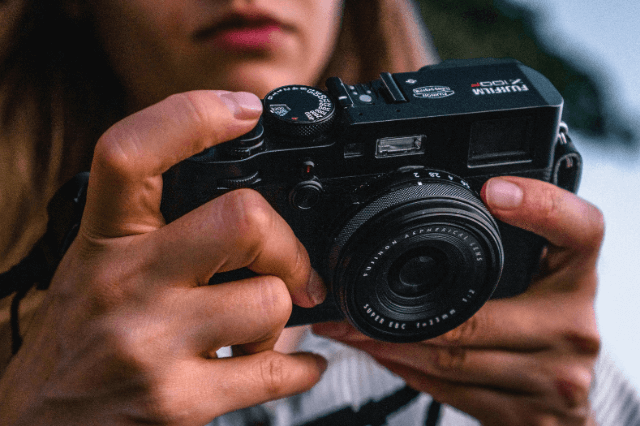
Fujifilm cameras have a fantastic reputation and are among the most stylish on the market, thanks to their retro design and easy-to-use controls.
The X-series has proven extremely popular over recent years, as they are sleek, attractive, and equipped with the latest imaging technology.
The straightforward functionality of Fujifilm cameras makes getting that perfect shot very intuitive, and they are often the first choice of professionals and amateur photographers alike.
Fans of Fujifilm often refer to the dials. They are very tactile and offer a ton of functionality that is usually not too difficult to master.
With regular firmware updates, fantastic build quality, versatility, and beautiful aesthetics, they make a camera that suits every kind of photographer. In this article, I have reviewed the eight best travel cameras from Fujifilm, and I hope you find value in my research.